-11 F. morning low Monday in the Twin Cities.
19 F. high yesterday at KMSP.
32 F. average high on February 23.
17 F. high on February 23, 2014.
February 23, 1835: Temperature at Ft. Snelling falls 26 degrees in only three hours.

A Baffling Pattern
It may sound trite and cliche but I’m not above that. What a difference a year makes in the heavy snow department! February 2014 was 12.3F colder than average as spokes of the dreaded polar vortex rotated overhead. But it snowed with 18.4 inches in February, 2014.
A year ago today we had 20 inches on the ground! This year: a dirty inch in the Twin Cities; no snow at all for southwest Minnesota. 25 inches so far this winter in the Twin Cities, compared with 57 inches a year ago.
What changed? A subtle shift in a remarkably persistent ridge of warm, dry high pressure blanketing the western USA. Last winter the ridge axis was further west; every new invasion of bitter air able to tap moisture from the Gulf of Mexico. That resulted in real snow, not this winter’s diet of scrawny Alberta Clippers. Unless jet stream winds are blowing from the southwest it’s hard to get a big storm into Minnesota.
A couple inches of snow may fall Saturday night into early Sunday as yet another storm slides south but no buzz-worthy storms are brewing.
The coldest subzero readings are behind us, but a cold bias lingers into next week. 30s sweep in the second week of March – late but very welcome!
* Monday visible image above courtesy of NASA MODIS and the University of Wisconsin.
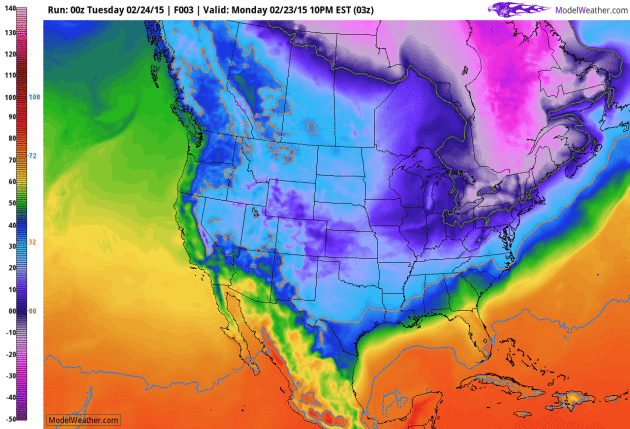
Arctic Burps. More like a series of world-class Siberian Belches, but a lack of snow across much of Minnesota and the Upper Midwest is limiting how cold it can get. If we had 20-24″ of snow on the ground, like we had last year at this time, temperatures would be at least 10F colder and we’d be setting more records. 2-meter temperature simulations from NOAA’s 12KM NAM show yet another cold surge arriving today and lingering into the end of the week. January cold, but not polar, school-optional cold. 60-hour loop: Ham Weather.

Ski Georgia. 60-hour predicted snow amounts show some potentially impressive accumulations from the Mid South into northern Georgia, maybe plowable amounts of slushy snow north of Atlanta Wednesday night. You can see the feeble clipper that whipped up strong winds, a temporary mild blip and light snow up north last night – the pattern not ripe for significant snow looking out 1-2 weeks.

When In Doubt Forecast A Cold Front. March is scheduled to come in like a yak, and probably go out like an emu. I’m not sure of that (bad with animals) but I think it’s close enough. Today will be the windiest day looking out 10 days with gusts over 30 mph early as colder air plows south again. Although not as cold as last week temperatures run about 15F colder than average Wednesday into Friday before some recovery over the weekend. A southern storm may brush us with a little snow late Saturday into early Sunday. I can’t get excited about amounts. Graphic: Weatherspark.
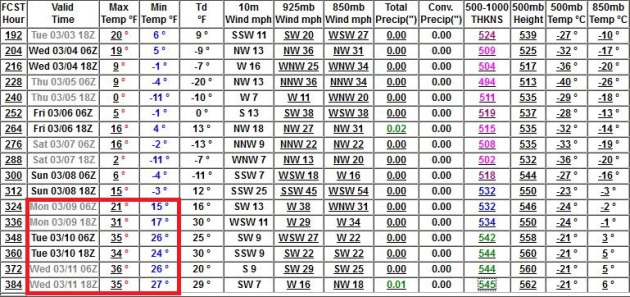
Like Turning On A Light Switch. GFS guidance shows the pattern shifting gears during the second week of March, a run of 30s after the 8th or 9th. Which makes sense – the cold has lingered long enough and we’ll be ready for a phase shift within a week or two. I don’t see anything resembling a “storm” into at least March 11.

Positively Zonal. GFS winds at 500 mb are forecast to be strongly westerly, zonal, pumping milder Pacific air inland as the core of the coldest air liftings north of Hudson Bay. We’ll see more cold fronts (no kidding) but the subzero nighttime lows may finally taper off by mid-March. Source: GrADS:COLA/IGES.

Cities Spark More Thunderstorms Than Rural Areas. It’s something I’ve noticed for decades now, dust and particulant pollution can “seed” clouds and spark more showers and thunderstorms downwind over the suburbs. Here’s an excerpt from an interesting story at Discovery News: “…Some big cities, particularly those located in hot and humid environments, actually spawn more thunderstorms than surrounding rural areas. That’s the conclusion of a new study by Northern Illinois University researchers, which was published in Quarterly Journal of the Royal Meteorological Society. The scientists found thunderstorm “births” were significantly higher on weekdays compared with weekend days, suggesting that increased pollution levels related to industry and commuting may play a role...”
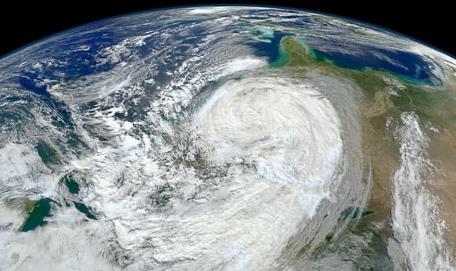
Better Prepared? What Meteorologists Learned From Hurricane Sandy. NJ Spotlight has a story focused on lessons learned; here’s an outtake: “…As the largest hurricane on record when it made landfall two years ago, Sandy presented a variety of challenges for forecasters and emergency management officials. Some have since been addressed, but many others remain. Communication problems meant that residents didn’t understand the true nature of the threat or how it would affect them; warnings were misinterpreted; and people failed to take them seriously. Above all, there was a pervasive mistrust of the predictions, with many people falsely believing that the storm couldn’t be as bad as forecasts suggested, since they had never experienced anything of that magnitude…” (File image above: NASA).

Cable Channels Speed Up Shows To Squeeze In Extra Commercials. Because none of us gets quite enough commercial-time, right? Factually has the story; here’s an excerpt: “…At some point, you’ve probably noticed a joke or two cut from a beloved movie or sitcom rerun—for those watching cable, at least. The reason being commercials and capitalism and America, etc.. But cable channels do more than just chopping. They are speeding up the very shows themselves. It’s hard to tell how long this practice has actually been in use, but according to The Wall Street Journal, compression technology lets channels like TBS deal with drops in ratings by trimming as much as three minutes off shows in some cases…”

Skin Patch May Protect Against Life-Threatening Peanut Allergy. The Today Show has an interesting story which may provide hope for peanut allergy sufferers; here’s a clip: “In the second phase of a drug trial, half of participants wearing the highest dose “peanut patches” for a year were able to consume the equivalent of four peanuts without reacting, researchers reported Sunday at the annual meeting of the American Academy of Allergy, Asthma, and Immunology. It means that “they are not going to have to worry about traces of peanut in a package that came from a plant where peanuts were used or minor contamination of food in a restaurant,” said the study’s lead author, Dr. Hugh Sampson, a professor of pediatrics at the Icahn School of Medicine and director of the Jaffe Food Allergy Institute at Mount Sinai...”

What’s In A $168,000 Oscars Swag Bag? Inquiring minds want to know. Let’s set a new high bar for wretched excess – Vanity Fair has the details; here’s a clip: “…The bags include an impressive array of incredible perks (free Silvercar Audi rentals for a year), slightly odd services (a $20,000 astrology reading), and treats that will probably never cross an A-list star’s lips (an $800 custom candy and dessert buffet). Other gifts include a $12,500 glamping vacation from Terravelo Tours, a train trip on the Rocky Mountaineer, a nine-night Italian vacation package valued at $11,500, $4,000 worth of liposuction, a $1,200 Matrone bicycle, non-invasive L.E.D. light therapy, and $25,000 of custom furniture perfect for giving their Malibu pad a special look...”
Photo credit above: “Neil Patrick Harris, center, host of the 87th Academy Awards, at the Governors Ball in Los Angeles, Feb. 22, 2015.” (Noel West/The New York Times).

TODAY: Mild start with early flurries, then clearing and windy. Winds: NW 20+ High: 30 (early)
TUESDAY NIGHT: Partly cloudy and colder. Low: 5
WEDNESDAY: Partly sunny and chilly. High: 15
THURSDAY: Sunny, less wind. Still too cold. Wake-up: 0. High: 12
FRIDAY: Blue sky, still snow-free. Wake-up: -2. High: 17
SATURDAY: Clouds increase, snow at night. Wake-up: 6. High: 25
SUNDAY: Couple inches early? PM clearing. Wake-up: 23. High: 28
MONDAY: Sunny, brisk start to March. Wake-up: 4. High: 21
Climate Stories…
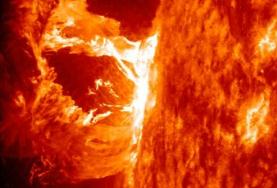
No, The Sun Isn’t Driving Global Warming. It did in the past, but there’s no apparent link between spiking temperatures and increased solar radiation reaching Earth. The Washington Post takes a look; here’s a snippet: “…However, the idea that the sun is currently driving climate change is strongly rejected by the world’s leading authority on climate science, the U.N.’s Intergovernmental Panel on Climate Change, which found in its latest (2013) report. “There is high confidence that changes in total solar irradiance have not contributed to the increase in global mean surface temperature over the period 1986 to 2008, based on direct satellite measurements of total solar irradiance,” the report found…”
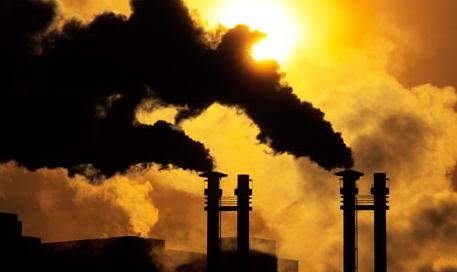
Harvard’s Star Alumni Urge Week of Protests on Fossil Fuels. Here’s the intro to a story at Bloomberg Business: “Actress Natalie Portman, environmentalist Robert F. Kennedy, Jr., and other high-profile Harvard University alumni are calling for demonstrations to urge divestment from fossil fuels. Organizers of “Harvard Heat Week” are planning events of “highly civil civil disobedience,” including daily sit-ins for the week of April 13, according to a letter released Friday asking alumni to come to the campus in Cambridge, Massachusetts, to join the effort...”

Global Warming Changing Weather In The U.S. Northeast. Greg Laden had an article at scienceblogs.com that made me do a double-take; here’s the clip: “…In a recent paper, “Quasi-resonant circulation regimes and hemispheric synchronization of extreme weather in boreal summer,” Dim Coumou, Vladimir Petoukhov, Stefan Rahmstorf, Stefan Petri, and Hans Joachim Schellnhuber noted the emergence of more frequent “Rossby Waves” in the jet stream, indicating that these waves have become more common and more persistent. They said, “We show that high-amplitude quasi- stationary Rossby waves, associated with resonance circulation regimes, lead to persistent surface weather conditions and therefore to midlatitude synchronization of extreme heat and rainfall events. Since the onset of rapid Arctic amplification around 2000, a cluster of resonance circulation regimes is observed involving wave numbers 7 and 8. This has resulted in a statistically significant increase in the frequency of high- amplitude quasi-stationary waves with these wave numbers…”
Photo credit above: “Pedestrians walk single file through snow banks on a Beacon Street sidewalk in Boston, Friday, Feb. 20, 2015. Midway through an epic winter that’s shattered records and buried Boston in more than 8 feet of snow, locals and outsiders alike could be forgiven for wondering why a world-class city that’s accustomed to heavy snowfall — and prides itself on being a global center of technology and innovation — can’t seem to dig out and move on.” (AP Photo/Elise Amendola)

Climate Change Deniers May Want To Check Out This Instagram Account. Here’s an excerpt from a powerful story at Fusion: “Need more evidence that climate change is happening right now? There’s an Instagram account for that. Since November, James Whitlow Delano, an American photojournalist specializing in environmental issues, has been posting vivid photos documenting how Earth’s changing climate is impacting people around the world, from brush fires and smog to drought and ice melt. Delano has contributed to National Geographic, the New York Times Magazine, Time, and a host of other publications, and has won numerous awards...”

Climatology Versus Psuedoscience Book Tests Whose Predictions Have Been Right. Here’s a snippet from a book review at The Guardian that caught my eye: “…Accountability was one of my prime motivating factors for writing this book. While contrarians often criticize the accuracy of climate models, their projections have actually been quite accurate. Not only were climate scientists and their models correct to project global warming resulting from the increasing greenhouse effect, but they’ve been quite good at projecting the right amount of warming. Climate scientists don’t take nearly as much credit as they should for these accurate projections…”
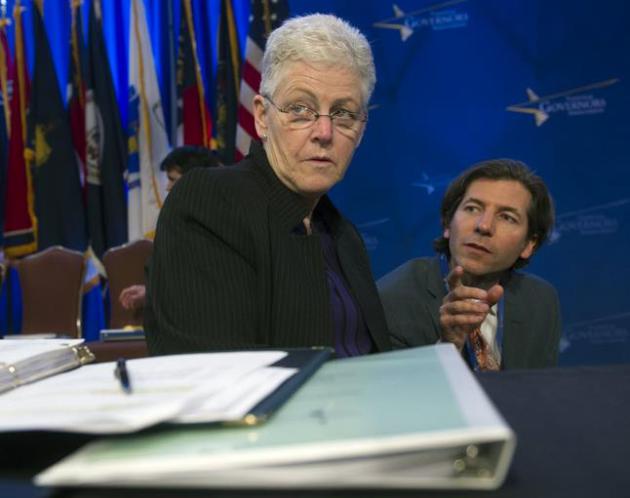
Obama’s Climate Change Wonk. Politico takes a look at EPA Administrator Gina McCarthy; here’s an excerpt: “…Nevertheless, even many of her opponents agree that McCarthy is particularly well-suited for the job. She’s no wallflower and often pulls laughs from even the most antagonistic crowds. Her history working for Republican governors like Mitt Romney and her straight-talking demeanor create an easy rapport with some of EPA’s detractors, and her affinity for the details of regulatory policy can keep her grounded in the practical rather than the political issues…”
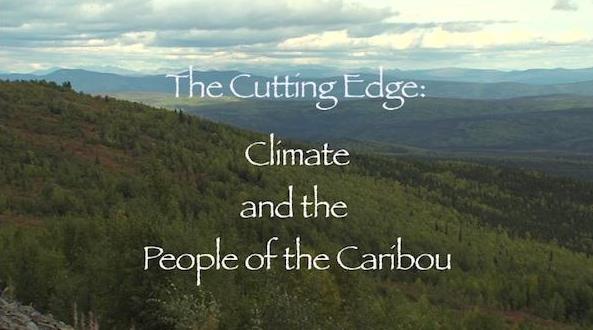
Wisdom Of The Elders in Alaska Talk Climate Change, Culture, Resilience. It’s a little off the beaten (media) path, which is probably a good thing – here’s an excerpt of a story at Indian Country Media Today Network: “…That’s what Wisdom of the Elders, a Portland-based nonprofit organization, did. They produced two films and a radio series that offer listeners and viewers a wealth of stories, songs and fascinating details of traditional lifeways in programs framed by culture, traditional knowledge, and climate science. Wisdom’s project was motivated by five decades of unprecedented environmental and climate issues that Alaska Native peoples have been experiencing, said executive director Rose High Bear (Deg Hit’an Dine, or Alaskan Athabascan)...”

Solar Energy’s New Best Friend Is…The Christian Coalition. I have yet to meet anyone who doesn’t want to save money. Alternative energy makes for interesting bedfellows. Here’s a clip from a Chris Mooney story at The Washington Post: “…The fight is important because the solar industry in the state, and the number of people installing rooftop solar, is expected to grow in coming years — that is, so long as solar remains a good deal financially. What’s particularly fascinating is how this debate has mobilized the religious community. Solar panels are going up on church rooftops in Indiana, and on Wednesday, the head of the Christian Coalition of America wrote a blog post favoring solar and referring specifically to the Indiana fight (although without getting into the technical details of net metering)…” (Image: Wikipedia).

Veteran Peacebuilder Discusses Global Climate Change As Destabilizing Social and Political Threat. Here’s a clip from an interesting article at Eastern Mennonite University: “…The human response to climate change can be dramatic, Schirch said. When drought caused by global warming mixes with corrupt governments and religious extremism, terrorism can result. In fact, retired naval commander Admiral T. Joseph Lopez, has argued that the conditions caused by global climate change will “extend the war on terror.” Lopez was among 11 retired military leaders contributing to a 2007 report, “National Security and the Threat of Climate Change… (File photo: AP).

